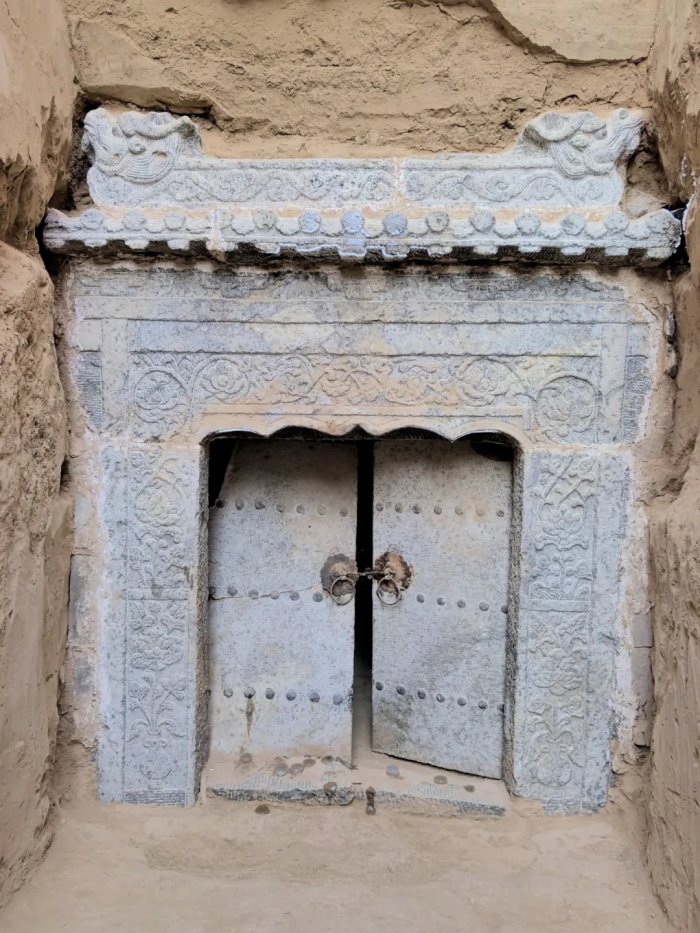Conny Waters - AncientPages.com - Archaeologists in China have made an incredible discovery.
During excavations near the Hexitou village in the Xinfu District, archaeologists located two ruins from the Longshan and Warring States periods. Additionally, 66 tombs spanning the Han, Tang, Jin, Yuan, Ming, and Qing dynasties were found. Among these discoveries was a remarkably well-preserved brick chamber tomb originating from the Ming Dynasty.
Tomb Gate. Credit: Shanxi Archaeological Research Institute
The remarkably intact 400-year-old tomb, extending over 80 feet, encompasses two burial chambers and niches secured with a stone tomb gate. It also boasts intricately carved ornamental double doors adorned with dragon motifs.
In ancient China, the dragon was a highly significant creature that became a symbol of the Emperor, and his throne was sometimes called the Dragon Throne.
The coffins. Credit: Shanxi Archaeological Research Institute
During their exploration of the untouched Ming tomb, archaeologists discovered an inscription on the passage of the grave. It read, "Epitaph of the Prince of Ming Ru Hou'an."
The primary chamber houses two remarkably preserved wooden coffins. The archaeologists also found an abundant variety of grave goods in the chambers, including ceramic pots, tiles, bowls, wooden furniture pieces, candlesticks, censers, painted wooden figures, writing tools like ink stones and calligraphy brushes, and brush holders.
The surface of the coffin is painted with flower and bird patterns. Credit: Shanxi Archaeological Research Institute
Inscriptions within the tomb and a plaque identify the deceased as Wang Luo. He was a notable eunuch and local ruler during the 16th-century Ming Dynasty.
Funerary wooden furniture. Credit: Shanxi Archaeological Research Institute
Partial pattern of wooden chair. Credit: Shanxi Archaeological Research Institute
Black-glazed porcelain. Credit: Shanxi Archaeological Research Institute
During the 16th century, the dynasty experienced a period of significant prosperity. For highly educated individuals such as Wang Luo and his family, there was an emphasis on personal development and recognition of individual skills and accomplishments.
The coffins discovered were adorned with intricate designs, including golden diamonds, leaves, flowers, and various other patterns. In addition, numerous ceramic jars filled with substances such as grain and oil were also unearthed in the same room.
Inside the back chamber, there was plenty of wooden furniture, including altars, tables, and chairs, but most of them were broken.
See also: More Archaeology News
Due to the exceptional quality of artifacts and their well-preserved state, archaeologists have characterized the tomb as "rare" and elaborate.
The Shanxi Archaeological Research Institute said in a press statement that the unearthed tomb provided vital information about the local Ming Dynasty's social life and burial customs.
Written by Conny Waters - AncientPages.com Staff Writer








